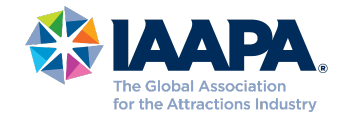European Ride Safety Standards
- Latest European Standards
-
After several years of work and industry collaboration, experts organized in the technical committee CEN/TC152 have agreed on an update to the European Standard EN 13814. This change came into effect on June 1st, 2019. The standard is split up in 3 parts:
- EN 13814-1:2019 Safety of amusement rides and amusement devices - Part 1: Design and manufacture
- EN 13814-2:2019 Safety of amusement rides and amusement devices - Part 2: Operation, maintenance and use
- EN 13814-3:2019 Safety of amusement rides and amusement devices – Part 3: Requirements for inspection during design, manufacture, operation and use
It represents the “state of the art” on amusement ride safety in Europe and continues its predecessor’s (EN 13814:2004) role as one of the key global standards for ensuring amusement ride safety. The new standard also marks a step forward in the harmonization efforts with ASTM, thanks to the collaboration between CEN and ASTM experts.
- Where the Standard Came From
-
EN 13814:2019 is derived from its predecessor, EN13814:2004 . After multiple years of work and industry collaboration, the responsible workgroup 1 of the technical committee CEN/TC 152 agreed to update the previous standard in 2018.
It is important to note that the European Standard EN 13814:2019 has been adopted by or is the amusement rides safety reference in more than 40 countries all over the world, carrying European standardization outside of the Europe’s borders.
- Who Participates in the Creation of the Standard
-
A wide range of experts is participating in further developing the standards. This is done by workgroup 1 of CEN/TC 152, chaired by the French standardization organization AFNOR.
Representative from all areas of the amusement and leisure industry are represented in this committee. This includes ride manufactures, inspection bodies and operators, representatives of consumers, safety authorities and regulators.
CEN - recognized as a European standards body by the European Union - was founded in 1961 and consists of 34 member nations, working together to develop European standards across various markets in Europe. - The Need to Change
-
As with all standards, there is a need to change and update to meet the stringent levels of safety across all areas of our industry, including manufacturing, maintenance and operations standards. This done in regular intervals.
Harmonization has also been a key factor in the development of the standards with consideration to other standards used across our industry, such as ASTM F24 amusement ride safety standards and ISO 17842:2015. - The Work that Went into the New Standard
-
The new European Standards EN 13814 series represents a step forward in the “state of the art” of safety of amusement rides.
This development consolidates the best practices developed over the last 13 years, representing another significant step toward global harmonization.
Harmonization with ASTM F24 standards has been another goal that the European experts consider fundamental. Important parts, like the acceleration experienced by the riders, benefit from the collaboration between ASTM and the EN experts.
The ASTM F24 committee develops standards for international use in the amusement industry and work continuously in harmonizing with the EN standards. - Implementation of the Standards
-
EN 13814:2019 has currently been adopted by more than 40 Countries across the world, either as a whole or as a partial reference.
(Please consult with your regulatory agency for confirmation of use within your own region.) - Where Can I Find Out More?
-
For press inquiries, please contact the IAAPA Press Team at [email protected] or call +1 321-319-7600.
IAAPA also published a news article about the changes to EN13814 in 2019. You can find it here.
